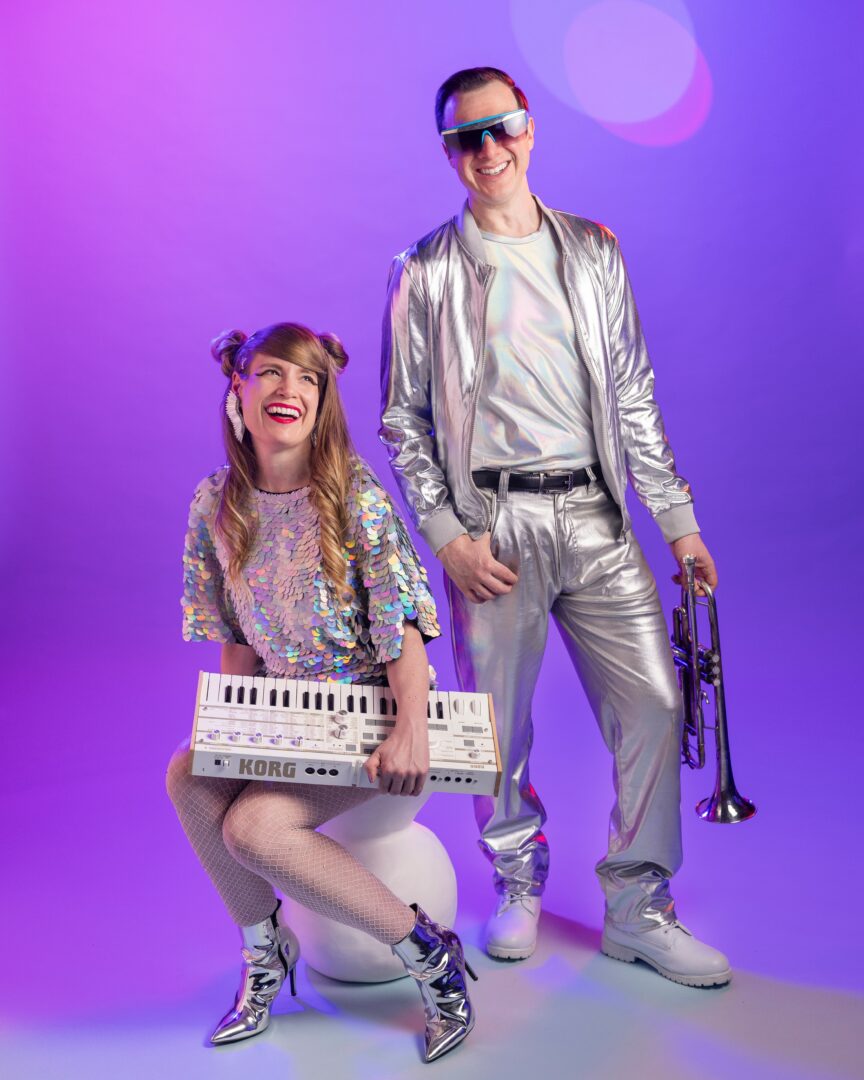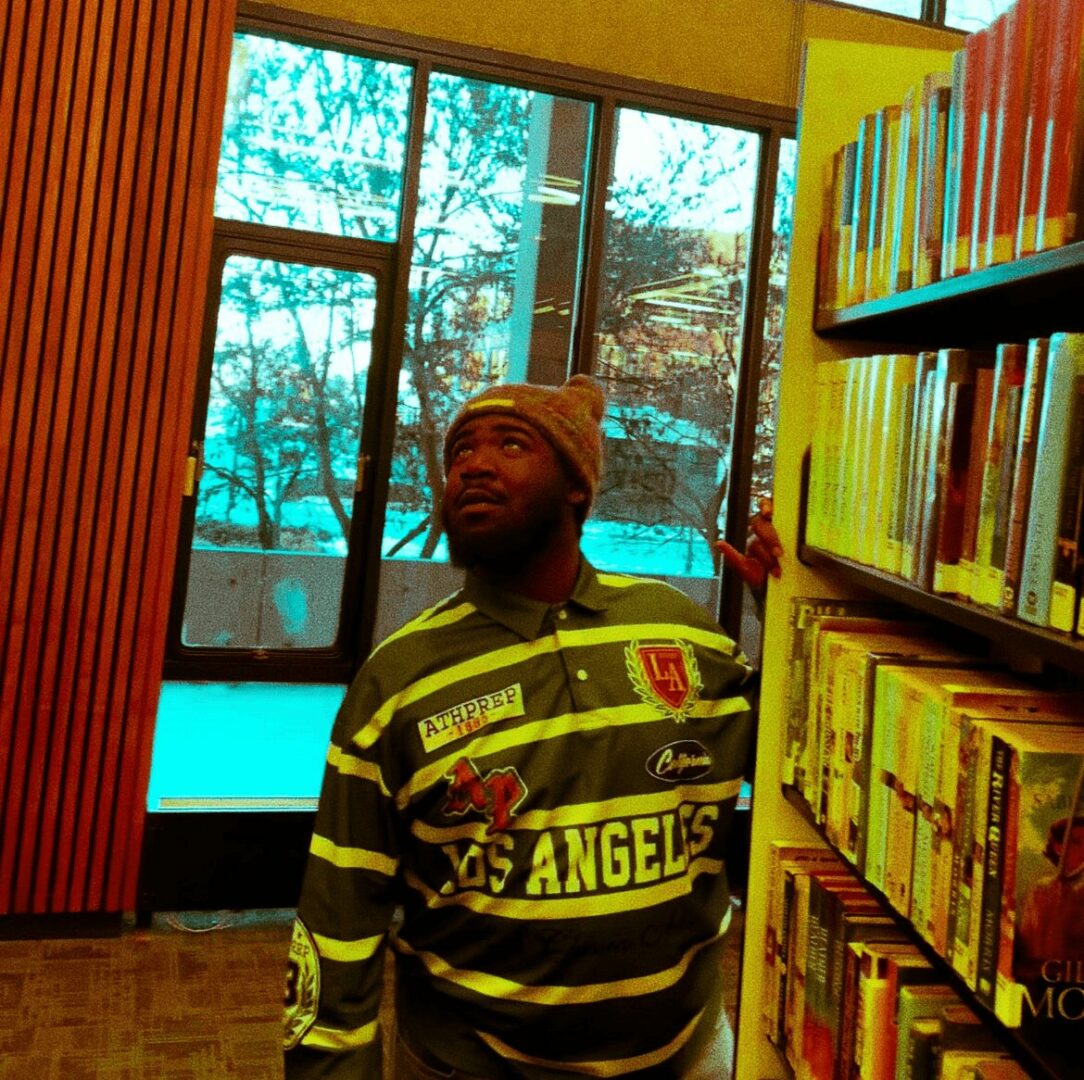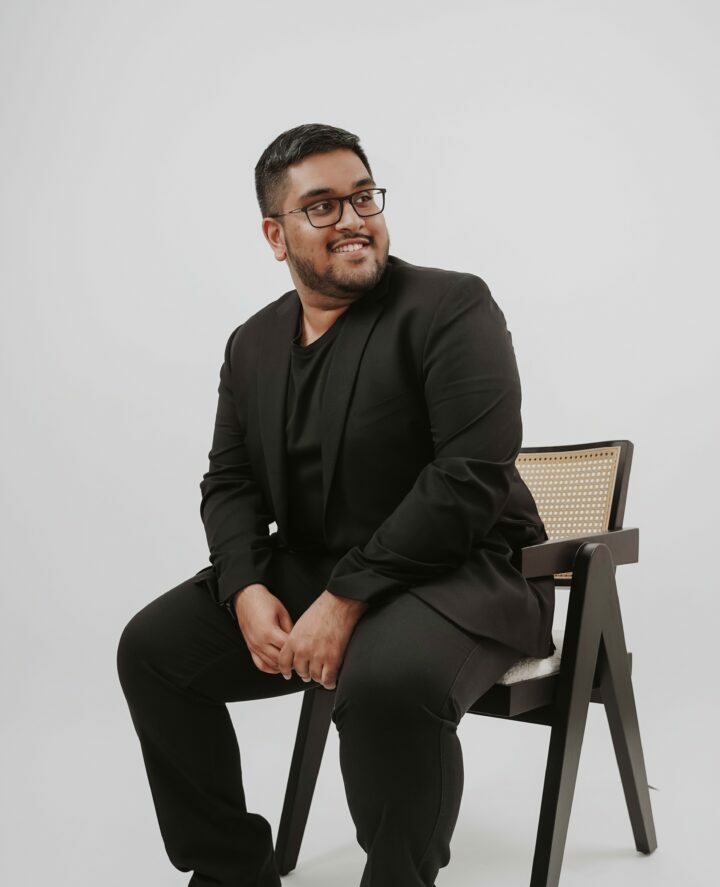We recently had the chance to connect with JaNae Contag and have shared our conversation below.
JaNae, really appreciate you sharing your stories and insights with us. The world would have so much more understanding and empathy if we all were a bit more open about our stories and how they have helped shaped our journey and worldview. Let’s jump in with a fun one: What do the first 90 minutes of your day look like?
NÆ (JaNae Contag): To be honest, the first 90 minutes of my day decide whether I’m stepping into my “main character energy” or spiraling into an “Over-Caffeinated Chaos Spiral” mindset. I’ve discovered that the tone I set in the morning shapes the next 12-16 hours, so I’ve been working this past year on a routine that truly grounds me. Because I have a 40-minute commute almost every day, I’ve been working on turning my drive into a kind of moving meditation that fills me with joy and purpose before the day begins.
To summarize my first 90 minutes of the day, it usually looks like this:
Wake up at or before sunrise (I think I am a morning person)
Throw on the clothes I laid out the night before (I like to plan ahead)
Make a pot of burr-ground light-roast coffee (if Blizz hasn’t already)
Slow sip coffee and toasted sourdough bread with olive oil
Grab my things for my work commute and hop in my car with a coffee to-go and a bottle of water
Spend 40-minutes in the car on a series of breathing and vocal exercises
The routine of doing vocal exercises every morning has been one of my biggest personal accomplishments of the past year. It has helped me re-focus my mornings and literally improve my singing in the vocal booth and on stage.
On top of that, this part of my routine has helped me feel so much more connected to my voice. To quote Brian Eno, “Singing aloud leaves you with a sense of levity and contentness.” It feels good and I can hear the results in our more recent recordings from the studio and from our live performances.
Singing in the morning is really rad and I highly recommend it, especially if you’re doing a lot of speaking in your day, or if you just want to lift your mood.
Blizz (Ryan Black): I definitely get going quickly in the morning. Often, I’m energized to start the day and make coffee, get in some exercise and write out my “get-to-do” list, before a simple breakfast. I don’t sleep in – my body just doesn’t do it. So even if working a late night in audio production or performing with NÆ I am always up the next morning around 6:30. Sometimes this is wonderful, and sometimes it means that the next day I am completely checked out by 2:00 or 3:00 in the afternoon if the previous night’s bed time was 3:00 a.m.
For me the first four or five hours of the day are a time I focus on being efficient and working on the highly creative, or detailed technical projects (whether personal or for others) that are on that “get-to-do” list. The second half of the day I generally can focus on routine tasks and things that don’t require as much creative energy.
Can you briefly introduce yourself and share what makes you or your brand unique?
NÆ (JaNae Contag): My name is JaNae Contag and I’m a Chicago-based artist, musician, and educator. In my creative work, I’m investigating cultural landscapes, intersections of pop culture and technology, and experiences of consumerism. As my persona, “NÆ” (pronounced ‘nay’) I create quirky, fun pop music that has an element of social critique – specifically orbiting around aspirational lifestyle culture, influencer culture, and the systemic issues of entitlement. I work closely on visual, sound, and music projects with my creative partner and collaborator, Ryan Black a.k.a. “Blizz”.
Blizz (Ryan Black): My name is Ryan Black and I’m an intermedia artist, project manager, sound designer and composer. The art I am most passionate about creating aims to influence people to think more critically about things usually taken for granted.
I enjoy collaborative projects and with every composition, album, multi-media project, or show that I produce, I first try and figure out what the intent is. This is where I begin a project, defining the intent, knowing that at its conclusion each person who experiences the work will have a personal reaction and their own interpretation.
Whether the consumer has more of a “free interpretation” or a more “directed” and predictable experience, intent is key to every project.
Working with JaNae Contag we take the form of pop multimedia artists and influencers; the persona of “NÆ” and her co-pilot “Blizz”! This gives a familiar place to springboard into more quirky, campy, inclusive, fun, but still pretty critical visuals, songs, and shows.
About NÆ: Known for our cosmic, genre-bending style, “NÆ and her co-pilot Blizz”blur the lines between electronic pop, performance art, and sci-fi storytelling. While there are layered meanings to our songs and live performances, our sound and artist identity often comes back to an unapologetic celebration of inclusivity, curiosity, and re-discovering one’s inner child.
Our live shows and online personas lean into campy aesthetics, with a creative expression that is intentionally absurd, exaggerated, and fuses elements of high and popular culture. From our cosmic inflatable unicorn named “Sparkleface” to our fuzzy stowaway friend “Luna Belle” (she is a native of the planet, “Gravoon”), and our supercomputer “Kionius”, our world is rich with characters, interactions, and a story that evolves both on live stages and in the performative space of social media.
To quote H. Peter Steeves, PhD, who wrote the liner notes essay for our upcoming album, “Contag and Black’s art is fully self-aware—aware, for instance, that in the act of criticism, the artists simultaneously participate in (and thus, even without choosing to do so, promote) the culture on which they are commenting. Part of the genius of these art-anauts, though, is that they do not pretend to be above their subject matter. What they do is never parody or modernist satire, a mocking from on high. Instead, they offer up their observations and worries from within—critiquing our plastic, disposable, contentless-other-than-dreams-and-glitter culture in the way that only someone who actually loves a plastic, disposable, contentless-other-than-dreams-and-glitter, giant, inflatable unicorn named Sparkleface can do.”
Our current project is building momentum for our upcoming LP, Orbital Ice Cream. We are dropping singles each month until the release, which will be available both digitally/on streaming platforms and on 12” vinyl in 2026. Last year, we were awarded a Creative Catalyst Artist Grant from the Illinois Arts Council which helped us get things really moving in the production process for the album.
Appreciate your sharing that. Let’s talk about your life, growing up and some of topics and learnings around that. What did you believe about yourself as a child that you no longer believe?
NÆ: This is an interesting question because I think children are so full of unfiltered ideas, imagination, and belief in oneself. Something happens around age seven where there is a “self awareness” of one’s own limitations that kicks in, and there’s a question of whether or not the child will continue to believe in their potential, or see themself as a part of a larger context where they might not be the “best” at something.
As a child, like many, I was really into learning songs and dances. I’d learn them in school, practice them at home, and then perform them for my parents. Around the age of seven, I learned one rhyming song with a simple dance routine and my parents wanted me to perform it for my grandmother over the holidays. I worked on it, excited to share it, and then we travelled to my grandparent’s house in December.
The unexpected twist was that my grandma wanted to record my performance on a video camcorder, which totally threw me off (as a seven-year-old). Nevertheless, I performed the song while my grandma held the camcorder and I looked into the cold lens. I finished the song and dance, my grandma hit stop, and I immediately lost control of my weird emotions and started crying on the carpet. I felt oddly invaded, or there was this existential permanence of my image caught on tape, and my seven-year-old self had a complete meltdown.
I think the emotion that took over was some version of shame – that I shouldn’t be doing this, or wasn’t good enough, or that I messed up just enough and that was captured in the camcorder forever. Looking at the footage later, I was completely unaware during my meltdown that all of my relatives were clapping and cheering me on.
The takeaway from this experience, remembering it vividly many years later, is that this sense of “shame” in self needs to be addressed, remedied, and fixed, even if it is uncomfortable. Going live on stage and performing was uncomfortable for me at first, but the conscious act of saying yes to shows and continuing to evolve as an artist and live performer has helped me revert to my unbridled five-year-old mentality and helped overcome the shameful feelings and beliefs of my seven-year-old self.
Blizz (Ryan Black): When I was in middle school I didn’t think I could understand complex things. I would back away from science or math because I was afraid I wouldn’t understand it. As a teacher now I run into students with similar mindsets every year.
What I’ve come to believe is that most of the time understanding something that is “more” complex is a factor of putting in focused study time, building my own reasoning of why it is valuable to learn, and figuring out a way to implement that knowledge into a project that gives me continued motivation to understand it better.
Part of understanding technical systems and becoming better at production design and development has been overcoming these science/math mental roadblocks and just giving myself a project and deadline. For example, understanding DMX programming, or Dante routing, or implementing multi-track playback systems, or cuing live sound design and Kionius lines (the super computer in the NÆ universe) into our live show.
When did you stop hiding your pain and start using it as power?
NÆ: I have always been drawn to making art and music, even as a child. My dad and mom would make waffles and eggs in the morning, and then we would draw on huge poster boards together; underwater scenes, desert scenes, jungle scenes. Like any child, I’ve feared losing my parents, and when I was 15 years old, my dad was diagnosed with lymphoma.
There was a lot of pain and fear in those months of chemo treatments, doctor’s appointments, and family friends coming over every day with shaved heads, at-home yoga classes, and dinner for our family. One of the ways I was able to cope was using my sketchbook to draw portraits of my dad, reclining in the armchair, or sleeping, or watching TV. I was spending a lot of time practicing piano and flute and structuring my time in routine ways that helped me move forward each day.
It was at this time that I realized that making art and making music were the best possible remedies for my own pain and fear and these practices could become a part of my life and the healing part of my life.
Fortunately, my dad has been cancer-free for many years, and my family has grown closer through those moments of pain and uncertainty.
Blizz (Ryan Black): I would say on average I haven’t used pain or trauma as an engine to creating public facing art projects. I’ve always worked towards collaborative projects and to be a part of that implementation. This removes some of my own personal story from the resulting work, but provides something far more interesting to chisel at and contemplate. This process is why I enjoy collaboration. I think everyone has something important to say and I find the most joy in pursuing projects where the most personal discussions happen in the pre-production. Then the outward intent of the art can be shaped and constructed and aimed at some specific goal.
My experiences do influence the work that I create. It’s there, it’s just not the focus of the work. It helps keep the motivation to pursue art, to make it a part of every day, despite the financial pressures, relationship or family or societal pressure that pushes me (and maybe many other artists) towards more “typical,” acceptable work.
Alright, so if you are open to it, let’s explore some philosophical questions that touch on your values and worldview. Is the public version of you the real you?
NÆ (JaNae Contag): Yes and no! But I’ll explain. I believe that in any aspect of what we do when we are around others, there is an element of performance / performativity. We act differently at our jobs than we do with our friends, and differently still with our family. It is the same person / personality, but adapted to various environments and contexts. I think our “real selves” are only present in private; when we are deeply engaged in an activity, or reflecting/thinking on our own. There isn’t a performance for anyone, and we can just “be”.
That said, I think this is a good question because I’ve chosen to have a persona on stage, instead of using my actual name. This allows for exaggeration, the campy aesthetic and sci-fi storyline, and the ability for me to perform as this character who emphasizes and exaggerates various qualities and characteristics of my own “real life” personality. Of course, this “performing oneself” idea also holds true to my social media presence, which is undoubtedly a curated and crafted version of self; but who’s social media isn’t a performance? We don’t often choose to show ourselves when we’re in that “just being” space, because the minute the camera enters our life/routine, there is an implicit element of performing some version of ourselves for the camera.
Blizz (Ryan Black): The persona “Blizz” is a part of me (Ryan Black). Blizz is a multi-instrumentalist, a 90s kid, a little goofy, a little fun, and a little technically over-the-top. Blizz is all of these things and so am I. But Blizz is definitely a performance piece, the character is designed. We go as far as to script out our entire shows. and while many of those lines might come from our beliefs, they are built to have an impact, and to be taken seriously, even while in the guise of a fun-filled, blow up unicorn, 80’s synth-pop dance party!
The public version of me is different depending if I’m in front of a classroom of college students, or directing production professionals for a fashion show, or hanging out at a barbecue, or on a stage. I think this is true of most people. We all have to code-switch.
As an artist one of the amazing things is you really get to think about what that means when you’re on stage. Who is that person and how much of them reveals the real self and/or how much is an exaggeration. I actively consider and change this on an almost per show basis.
Thank you so much for all of your openness so far. Maybe we can close with a future oriented question. When do you feel most at peace?
NÆ (JaNae Contag): I feel most at peace when I’m in the middle of a nice long run, outdoors. I can tune out the world, put on some upbeat dance tunes and zen out. The endorphin high definitely helps! Running is how I clear my mind and reset my whole psyche; I feel creatively recharged and usually have to jot down a bunch of weird and exciting ideas as soon as I get back home.
Blizz (Ryan Black): I feel quite calm when I have completed a set of reasonable tasks in a day, often from that “get-to-do” list I wrote in the morning, and I’m able to just take a deep breath and relax in the mid-afternoon. If I follow that up with a walk, or some basic exercise, anything physical, it’s a pretty wonderful, peaceful place to be.
Contact Info:
- Website: https://www.naemusic.com
- Instagram: @naesynthpop
- Facebook: https://www.facebook.com/naemusic/
- Youtube: https://www.youtube.com/@NAESYNTHPOP
- Soundcloud: https://soundcloud.com/naesynthpop
- Other: Spotify: https://open.spotify.com/artist/0ME7ws0SL0fOeWS9a2lxhh?si=Y8kBo2n_RHqcajJweLXZ4Q
Bandcamp: https://nae-music.bandcamp.com
Apple Music: https://music.apple.com/us/artist/n%C3%A6/327390489
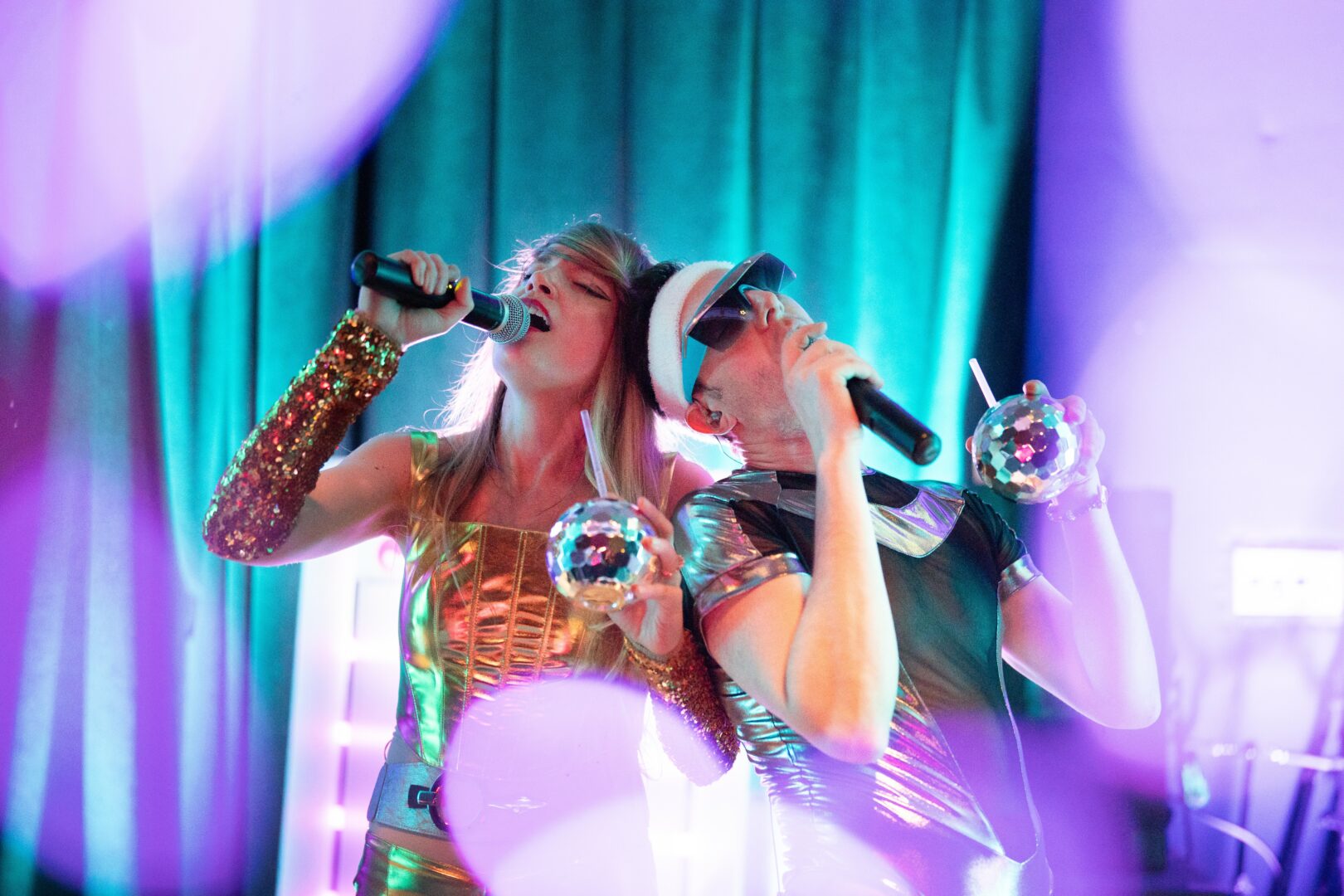
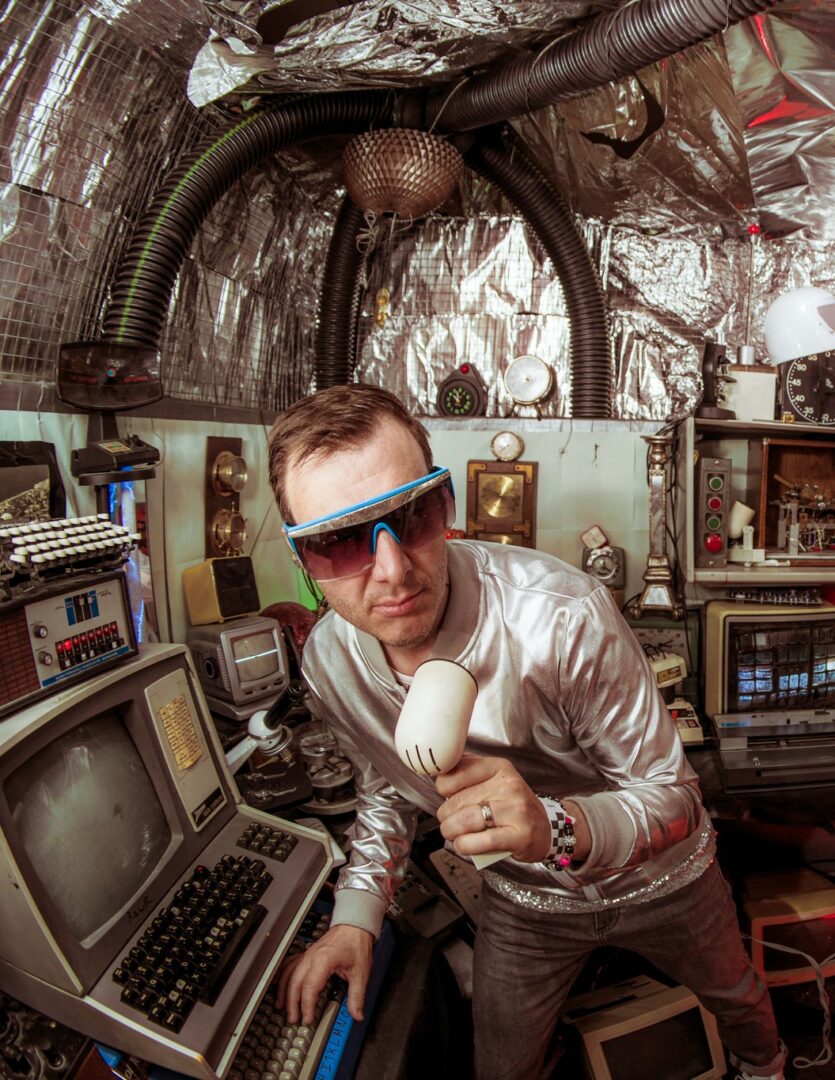
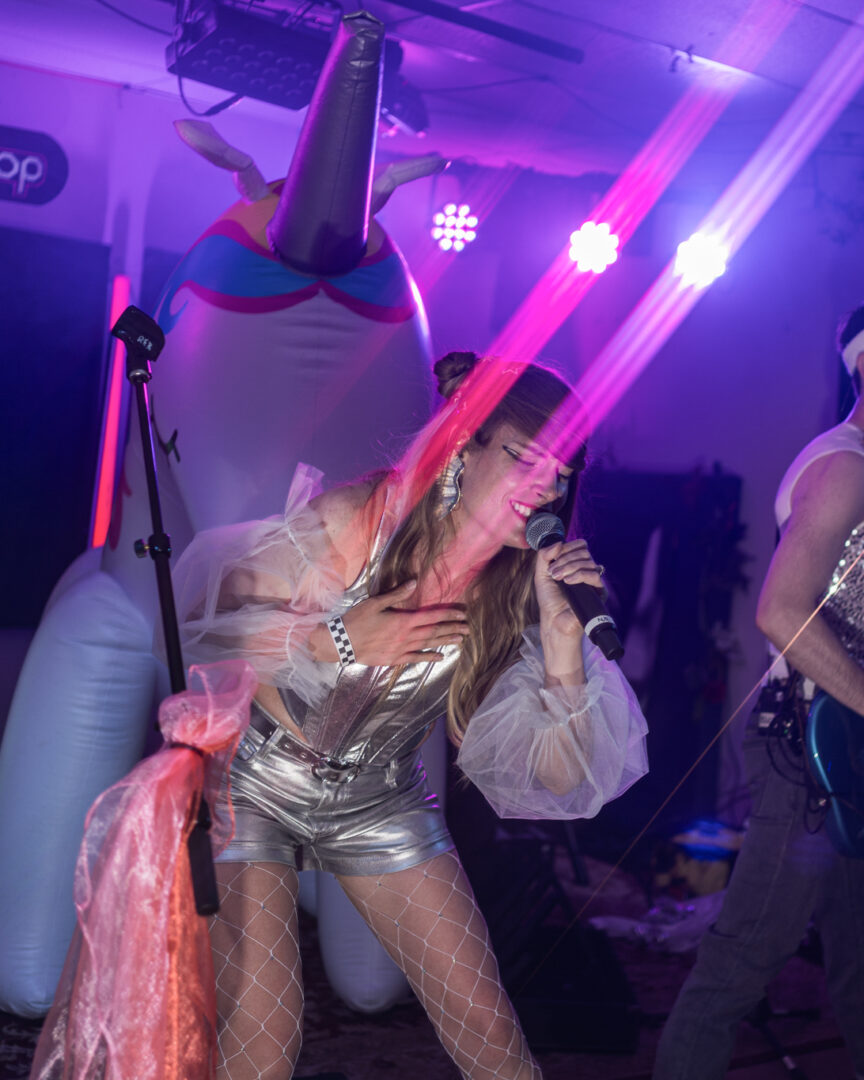
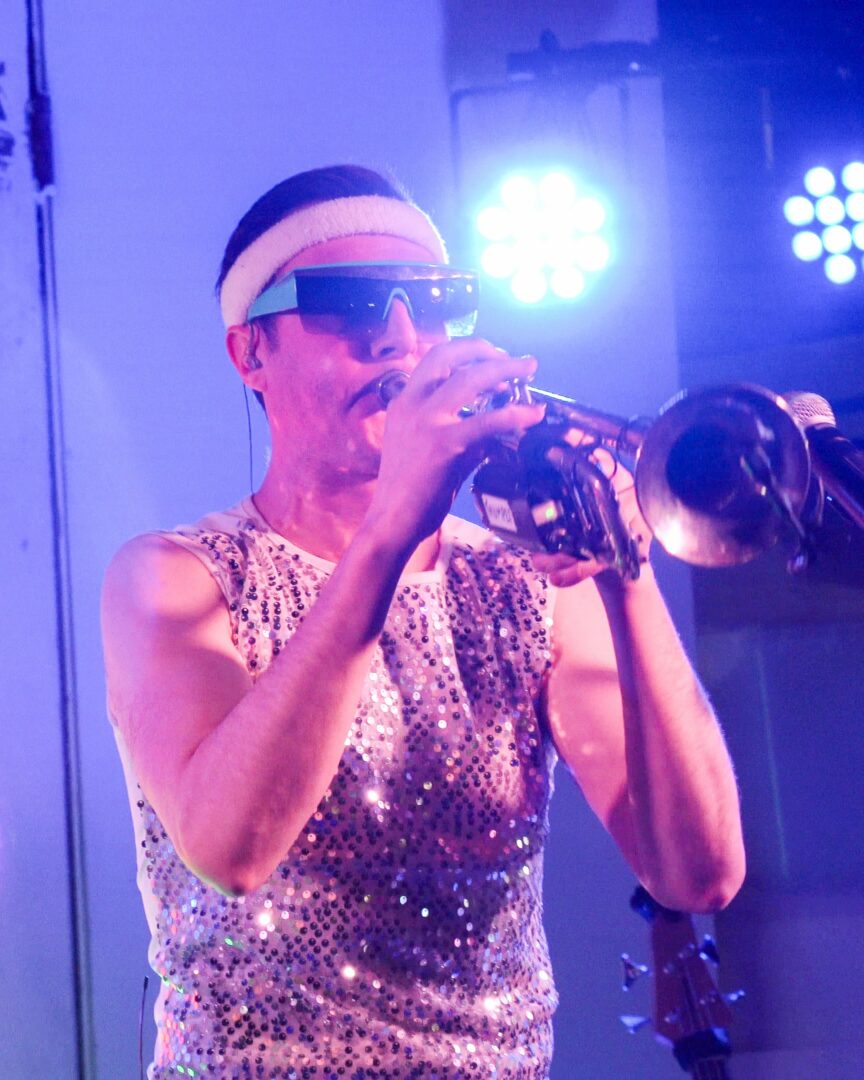
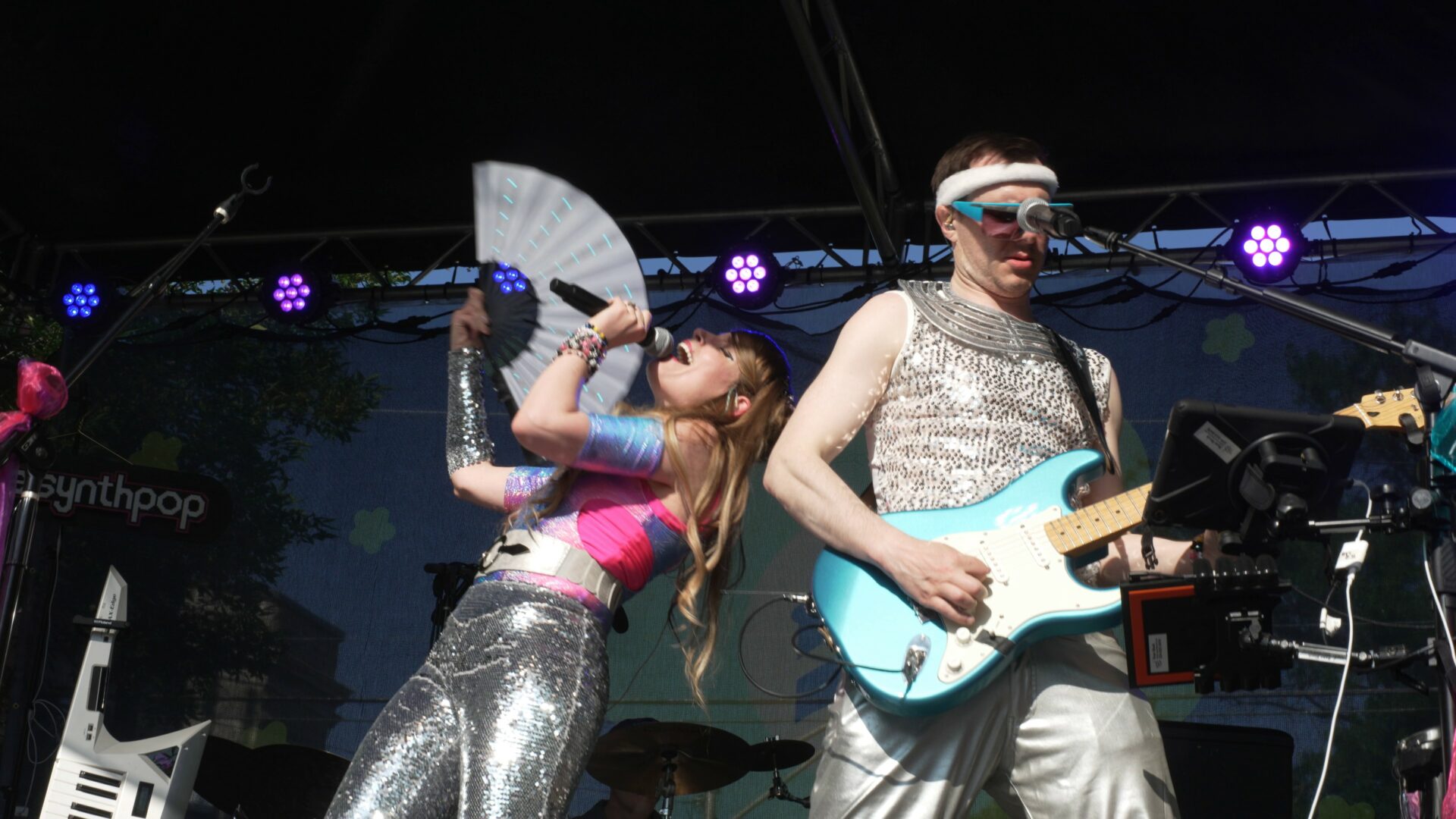


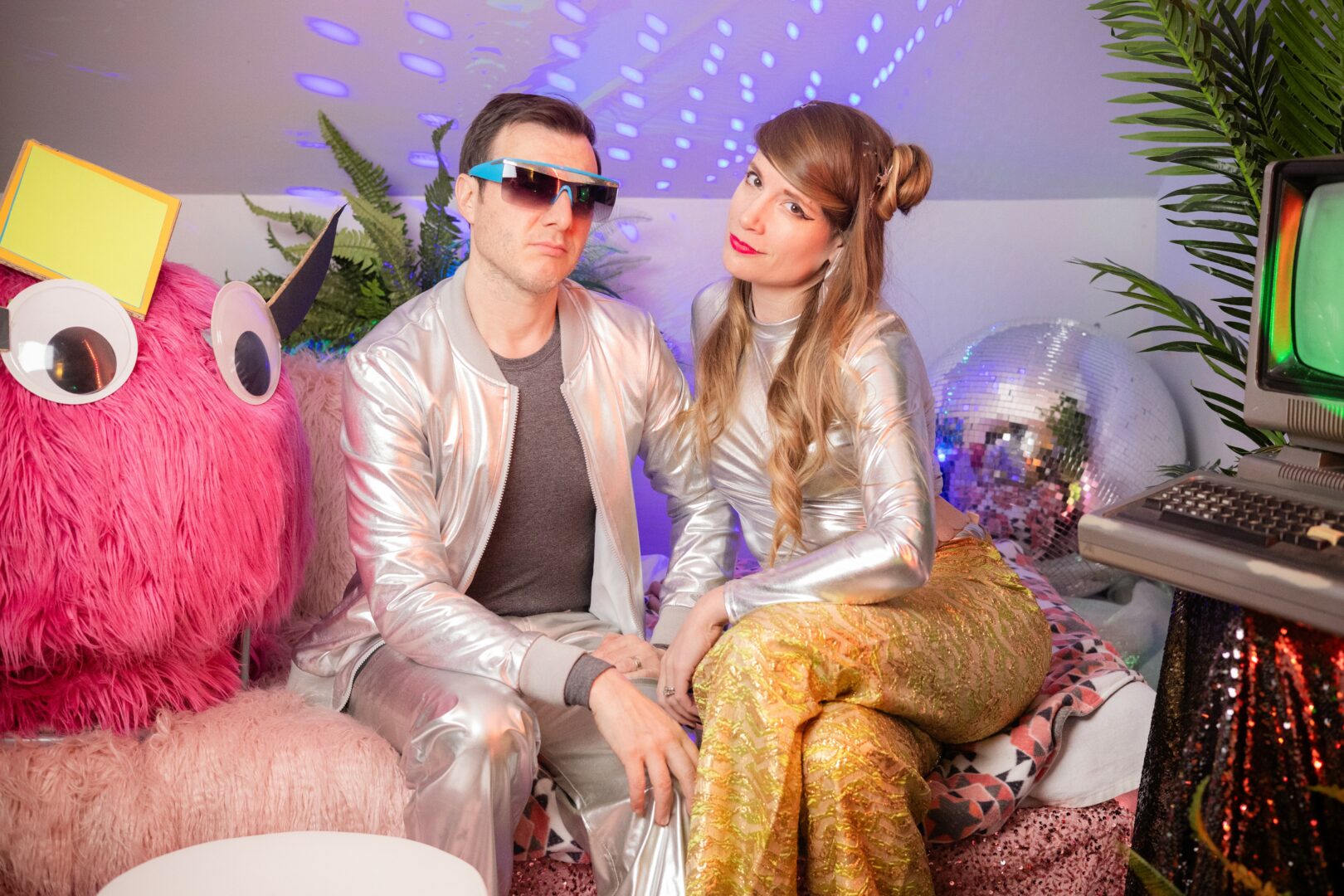
Image Credits
JaNae Contag & Ryan Black
Aidan Kranz
Rebecca Ickes Carra
Seth Hall
so if you or someone you know deserves recognition please let us know here.

